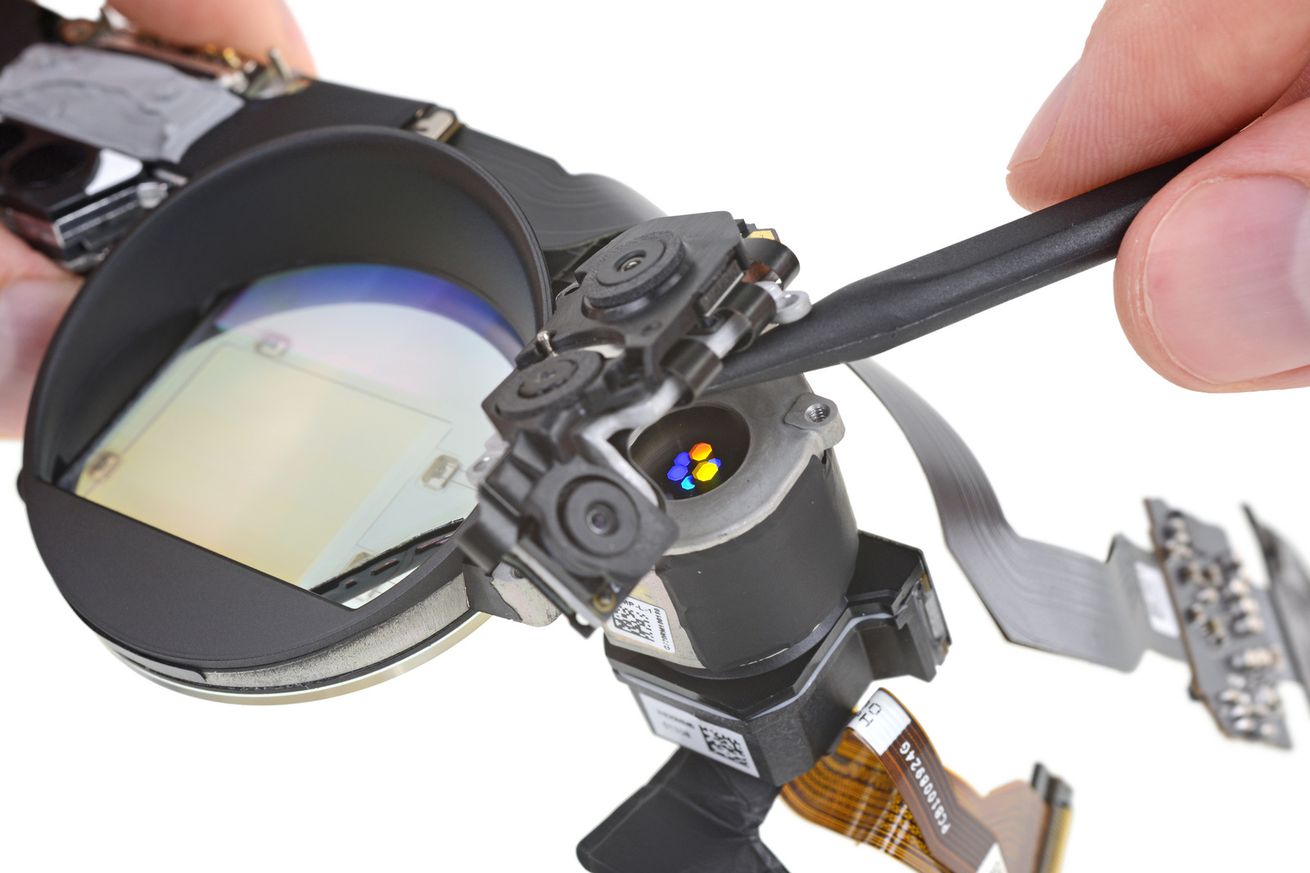
Augmented reality company Magic Leap released a “creator edition” of its ambitious, hugely hyped headset earlier this month. Today, iFixit published its teardown of the device, featuring a concrete look at technology that Magic Leap discusses in very abstract terms.
As we’ve previously discussed, the Magic Leap One Creator Edition uses a combination of waveguide lenses and tracking cameras to project hologram-like objects into your real environment. iFixit actually goes to the trouble (and it does have a lot of trouble with parts of this hard-to-repair device) of pulling out the multilayered waveguide and the little projector that shoots light through it. It also spells out the details of things like the controller’s magnetic tracking, which isn’t revelatory but also isn’t something Magic Leap spends a lot of time explaining.
The teardown reflects the basic impression we’ve had of Magic Leap: it’s an interesting device with some serious compromises. iFixit suggests that the magnetic sensor coil’s placement will make it less reliable for left-handed use. (I’ve used it in both left and right hands without noticing this, but I’ve only had a short demo.) Magic Leap’s headset is permanently wired to a wearable computer, and iFixit confirms that if you break that single cable, replacing it will take some work.
Unlike a lot of iFixit’s teardown subjects, the Magic Leap One isn’t a mass-market product; it’s aimed at developers and other people who are more interested in Magic Leap’s platform. But since it costs $2,295, laying out repair options is genuinely helpful — and for the rest of us, it’s a fun read.
from The Verge - Teches https://ift.tt/2Lk88qI
Comments
Post a Comment